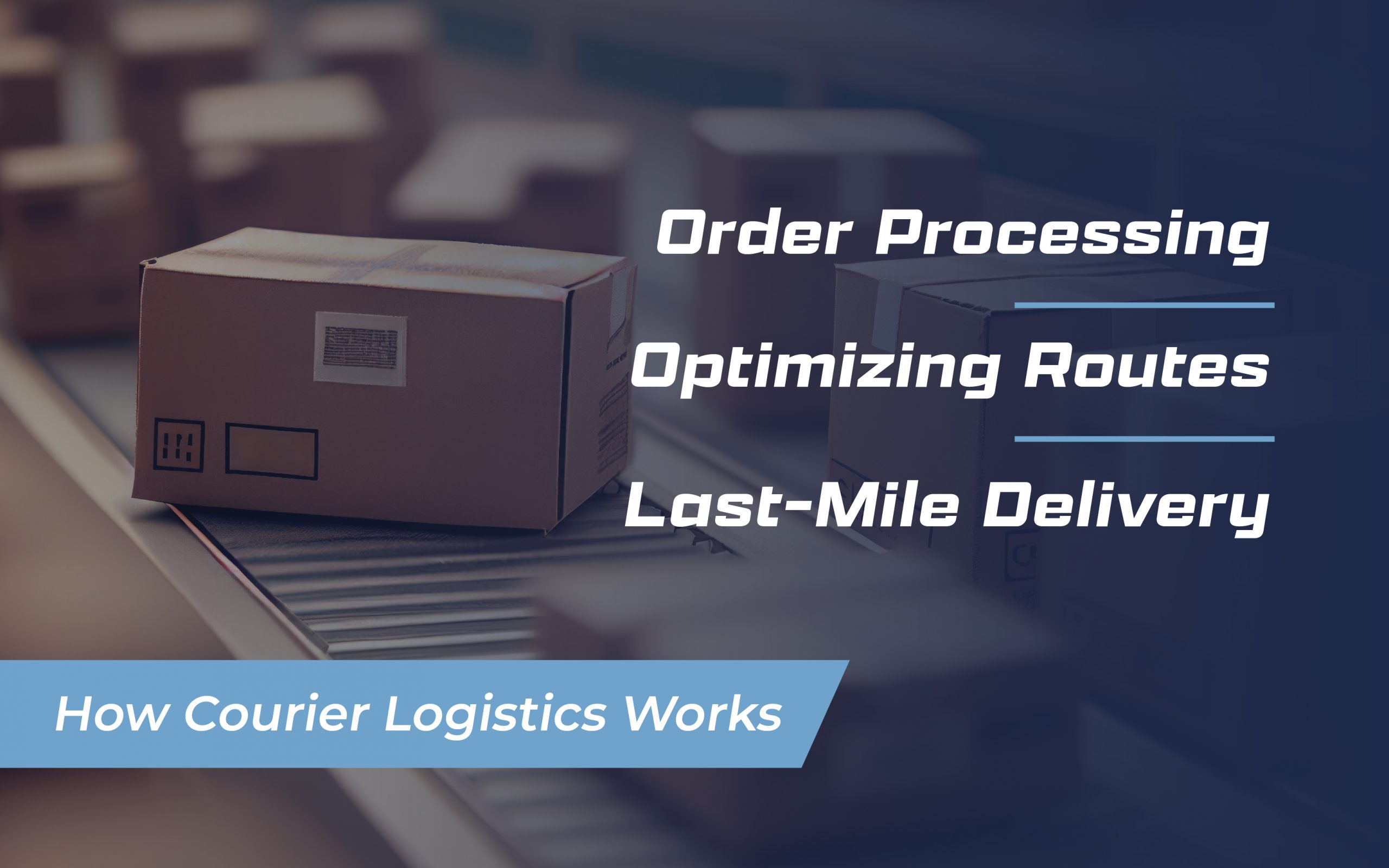Moving shipments from point A to B takes careful planning. Courier logistics refers to the process of transporting packages from one location to another.
While this may sound simple, it can be complex. For example, pharmaceutical shipments contain sensitive items that need to arrive on time and in proper condition. The products must make it to the destination quickly so the medicine is readily available.
Courier logistics works to move products safely and securely. Let’s explore the process for packages.
Steps in Courier Logistics
What’s the process for preparing, transporting, and receiving a shipment? The steps may differ depending on the deliverables. Here are the basics you need to know:
1 — Place an Order
A customer places an order for package delivery. This step happens over the phone, online, or even in person. Details for the order include:
- Sender and recipient details
- Package size and weight
- Special instructions (such as temperature control)
2 — Order Processing
The courier provider receives the order and begins processing. The provider verifies the shipment information, calculates costs, and gives the order a unique tracking number.
3 — Package Pick-up
After the order is processed, the courier provider collects the items from the sender, whether it’s a residence, business, or drop-off location.
4 — Sorting Product
It’s time to take the package to the courier company’s facility or warehouse where it’s sorted based on destination. Sorting and consolidating packages ensures efficient route planning. Shipments going to the same or close-by locations may be consolidated to offset transportation costs.
5 — Planning and Optimizing Routes
The courier provider uses advanced technology tools to find the most efficient routes for delivery drivers. These factors are considered when optimizing routes:
- Package destination
- Delivery time windows
- Vehicle capacity
- Traffic conditions
- Distance
6 — Dispatch
Shipments are assigned to couriers for delivery. Dispatchers consider proximity, load capacity, and delivery schedules when matching packages with delivery personnel.
7 — Tracking
Scanning and GPS allow the progress to be tracked from start to finish. You can track your items online and in real time.
8 — Transportation
Couriers transport packages along the planned routes. They follow specific schedules to ensure packages are dropped off at their destinations on time.
9 — Last-Mile Delivery
Finally, the package is delivered to the receiver or the specified location. Couriers follow any special delivery requirements and then continue on their designated route.
10 — Delivery and Returns
When a package is delivered, the receiver may need to provide a signature or confirm the proof of delivery. If the delivery is unsuccessful, the courier provider may arrange for a second delivery attempt or process a return.
Benefits of Courier Logistics
Why does courier logistics have so many steps? The process of moving goods takes time because couriers want to ensure accuracy, maintain product quality, and deliver packages safely and securely.
When you work with a courier service, you can expect advantages such as:
- Reliability
- Cost-effectiveness
- Professional handling and security
- Real-time tracking and visibility
- Long-distance deliveries
- Enhanced customer experience
When you work with a reputable courier service, you can have peace of mind knowing your shipments are handled with care. Taking the time to make sure your shipments are in proper condition shows your customers your commitment to product integrity and customer satisfaction.
Courier Logistics at Stat Experts
Stat Experts is dedicated to the delivery needs of the medical industry. When you work with our team, you can be confident knowing our staff, procedures, and practices meet and exceed the highest industry standards.
We offer affordable rates and timely, accurate services — and we always make our customers the first priority. Contact us today to learn more about our courier services.


